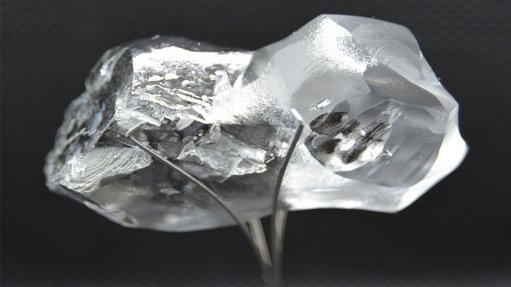Catalytic qualities of platinum driving constant innovation – WPIC
Having been discovered two centuries ago, the use of platinum as a catalyst is driving new catalyst applications, reports platinum demand investment stimulator the World Platinum Investment Council (WPIC).
In the early decades of the nineteenth century, scientist Sir Humphry Davy stumbled on the phenomenon of heterogeneous catalytic oxidation when working on the development of a personal safety lamp for miners.
By inserting a platinum wire near the ignited wick of the lamp, he discovered it would catalyse the continued oxidation of coal gas.
This “important discovery”, says the WPIC, was the precursor to the use of platinum as an industrial catalyst in a process that has been around for over 100 years – and which remains vital today – the production of nitric acid.
Nitric acid is a major feedstock for fertiliser, and during its manufacturing process, oxidation of ammonia gas with air occurs to form nitric oxide. To achieve a high conversion efficiency, this is carried out at pressure over a platinum/rhodium catalyst.
On the back of these historic developments, the WPIC says new applications for platinum catalysts continue to be found.
As such, it points out that Japanese precious metals business Tanaka recently won a Technology Award from the Catalyst Manufacturers Association in Japan, in recognition of its involvement in the development of a hydrophobic platinum-based catalyst that prevents moisture build-up and enables a catalytic reaction to be maintained, even at ambient temperatures.
The Tanaka catalyst, developed in collaboration with Japan’s National Institutes for Quantum and Radiological Science and Technology, can be used for controlled oxidation reactions of hydrogen and combustible gases, in nuclear fusion facilities and elsewhere, without the need for heaters and other equipment.
It also enables reactions in outdoor environments without access to an electric power source or in disaster-affected areas during power failures. Because of the hydrophobic properties of this catalyst, it has potential applications in safety equipment to prevent explosions and other accidents.
HYDROGEN FROM THE SEA
In Australia, researchers at Swinburne University, in collaboration with Shaanxi Normal University, China, have developed a robust single-atom platinum catalyst that can produce high-performance, solar light-triggered hydrogen from seawater.
This has led to the development of a prototype device that is able to float on the ocean surface, enabling hydrogen production from seawater, notes the WPIC.
In conventional photocatalysts, electrons and holes (the absence of electrons) are separated under solar radiation to trigger water splitting to hydrogen and oxygen. The separated electrons and holes tend to recombine, which significantly decreases the photocatalytic activity and reduces the hydrogen production efficiency.
However, the newly-discovered single-atom platinum catalyst effectively extracts the photo-generated electrons, thus avoiding unwanted recombination.
In terms of platinum's use in automotive catalytic converters, the commodity remains as relevant as ever, states the WPIC. Such demand from the automotive sector, the single largest demand segment for platinum, accounts for about 40% of yearly platinum demand.
Autocatalysts are exhaust components that reduce harmful emissions from internal combustion engine vehicles.
However, the WPIC also notes that platinum is an effective catalyst in gasoline vehicles, where it can be a substitute for its sister metal, palladium, at a one-to-one ratio.
While the WPIC says the last two decades have seen the predominant use of palladium in autocatalysts for gasoline vehicles, this trend is being reversed owing to the significant price differential between platinum and the far more costly palladium.
Interestingly, the WPIC says a similar, price-driven reversal occurred from 2000 to 2003 that resulted in over one-million ounces of platinum a year replacing palladium in autocatalysts.
As such, platinum’s growing share of the autocatalyst market, as it substitutes for palladium in gasoline engine vehicles, is expected to result in significant additional yearly demand in the next few years, states the WPIC.
Comments
Press Office
Announcements
What's On
Subscribe to improve your user experience...
Option 1 (equivalent of R125 a month):
Receive a weekly copy of Creamer Media's Engineering News & Mining Weekly magazine
(print copy for those in South Africa and e-magazine for those outside of South Africa)
Receive daily email newsletters
Access to full search results
Access archive of magazine back copies
Access to Projects in Progress
Access to ONE Research Report of your choice in PDF format
Option 2 (equivalent of R375 a month):
All benefits from Option 1
PLUS
Access to Creamer Media's Research Channel Africa for ALL Research Reports, in PDF format, on various industrial and mining sectors
including Electricity; Water; Energy Transition; Hydrogen; Roads, Rail and Ports; Coal; Gold; Platinum; Battery Metals; etc.
Already a subscriber?
Forgotten your password?
Receive weekly copy of Creamer Media's Engineering News & Mining Weekly magazine (print copy for those in South Africa and e-magazine for those outside of South Africa)
➕
Recieve daily email newsletters
➕
Access to full search results
➕
Access archive of magazine back copies
➕
Access to Projects in Progress
➕
Access to ONE Research Report of your choice in PDF format
RESEARCH CHANNEL AFRICA
R4500 (equivalent of R375 a month)
SUBSCRIBEAll benefits from Option 1
➕
Access to Creamer Media's Research Channel Africa for ALL Research Reports on various industrial and mining sectors, in PDF format, including on:
Electricity
➕
Water
➕
Energy Transition
➕
Hydrogen
➕
Roads, Rail and Ports
➕
Coal
➕
Gold
➕
Platinum
➕
Battery Metals
➕
etc.
Receive all benefits from Option 1 or Option 2 delivered to numerous people at your company
➕
Multiple User names and Passwords for simultaneous log-ins
➕
Intranet integration access to all in your organisation


















